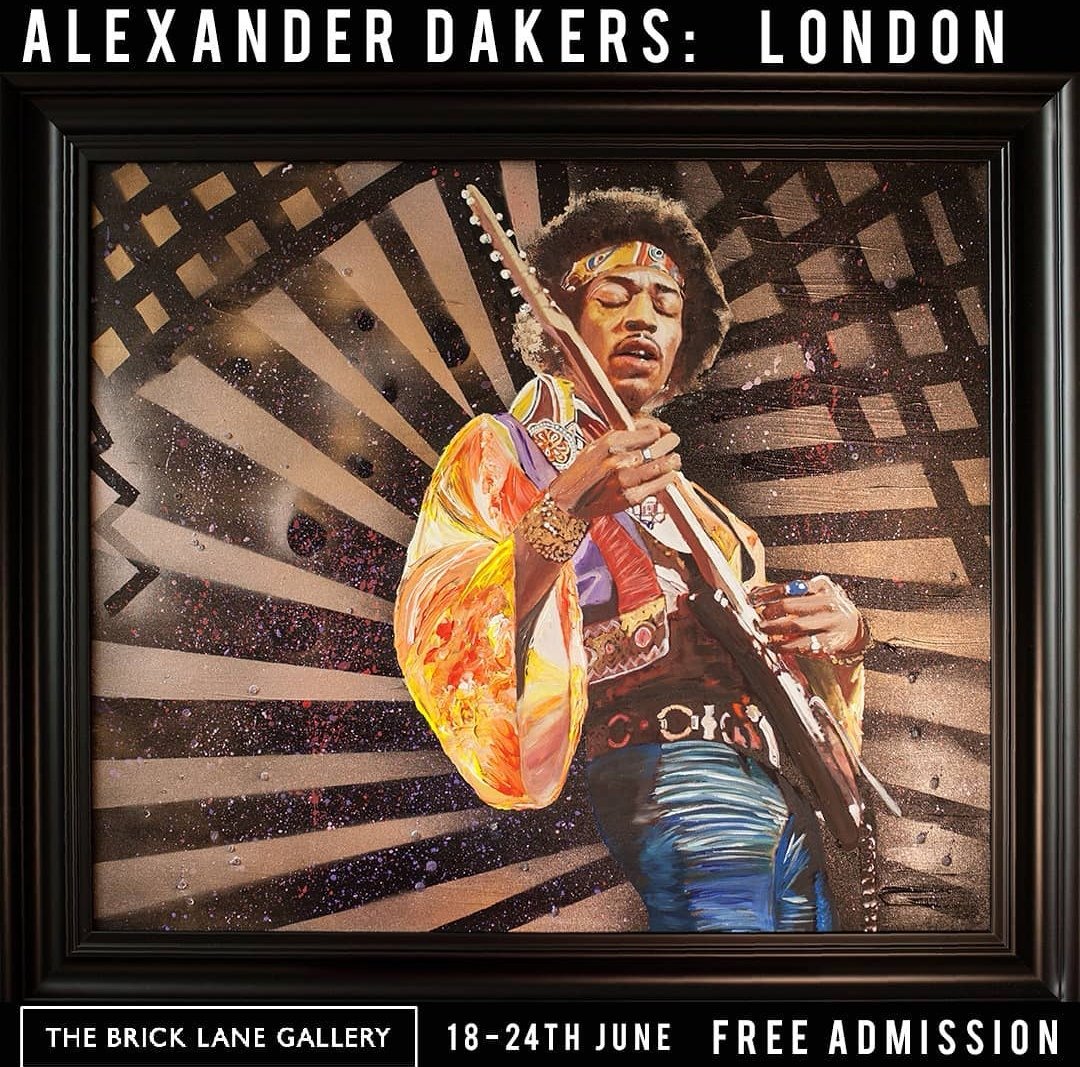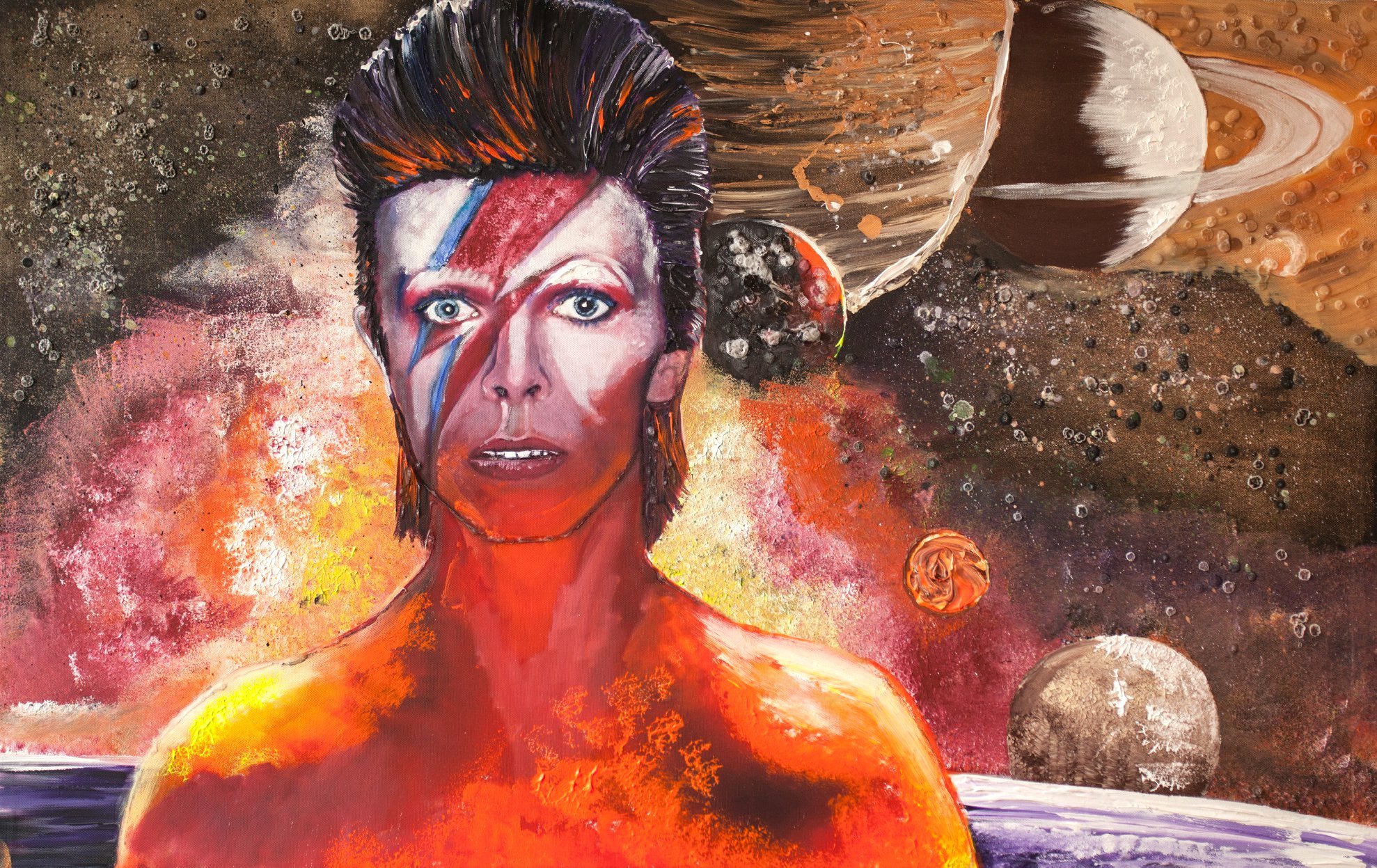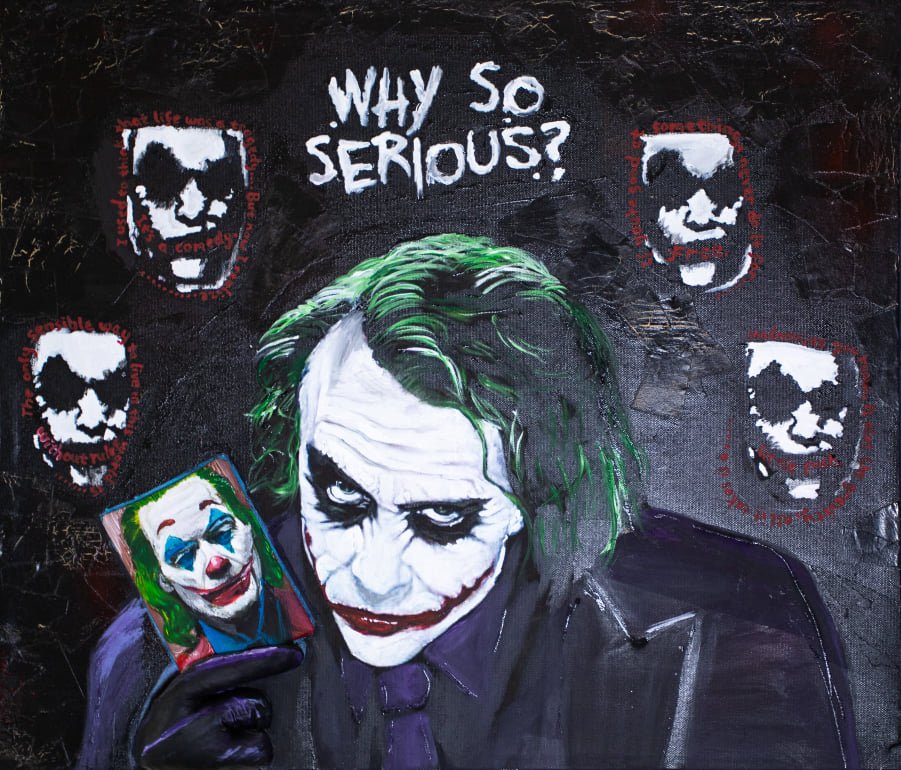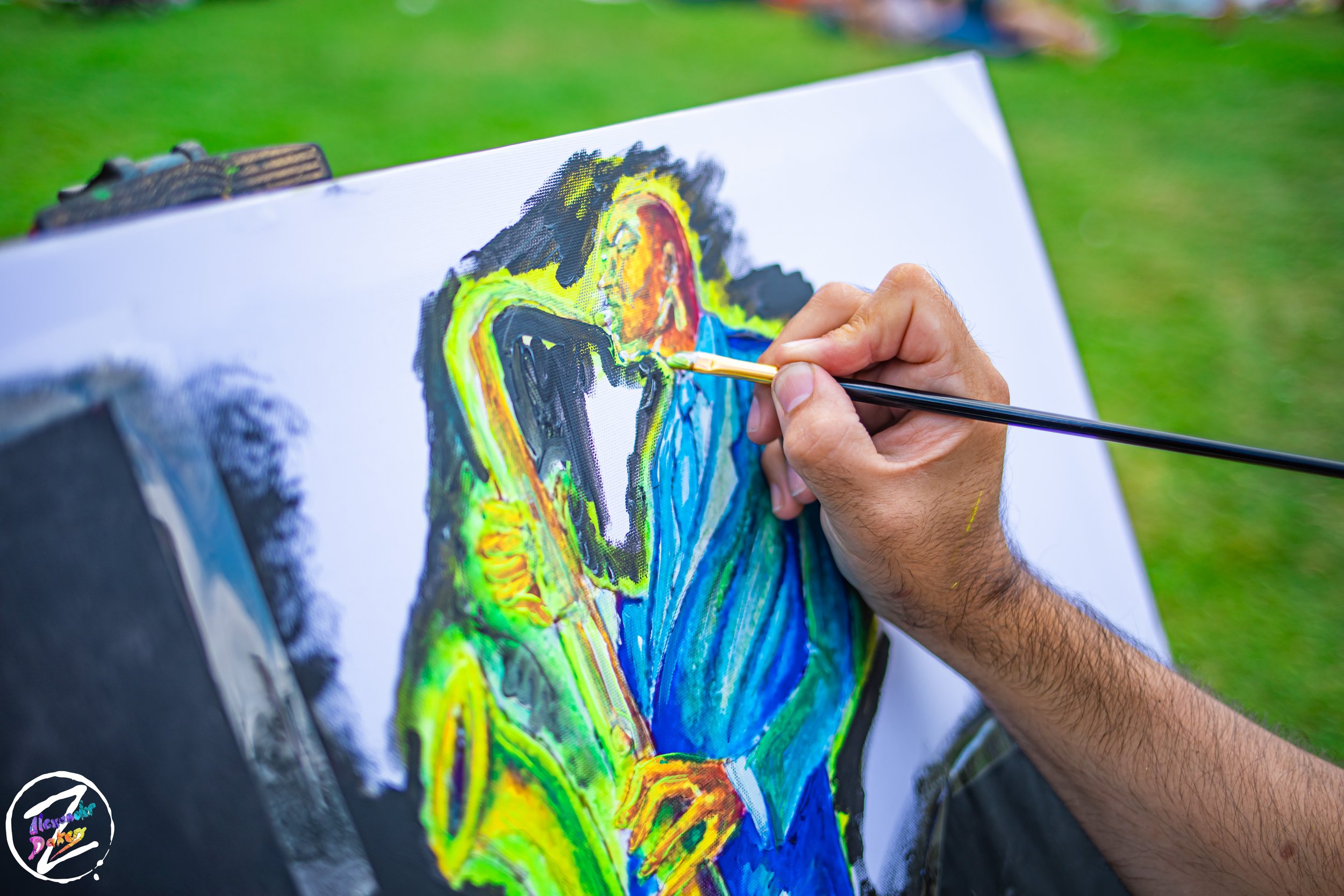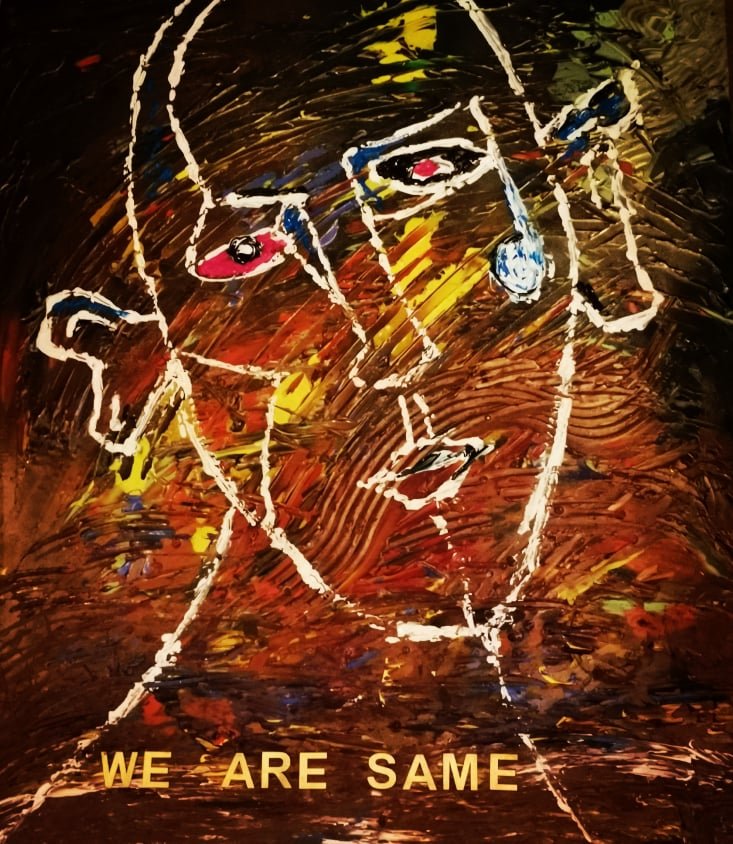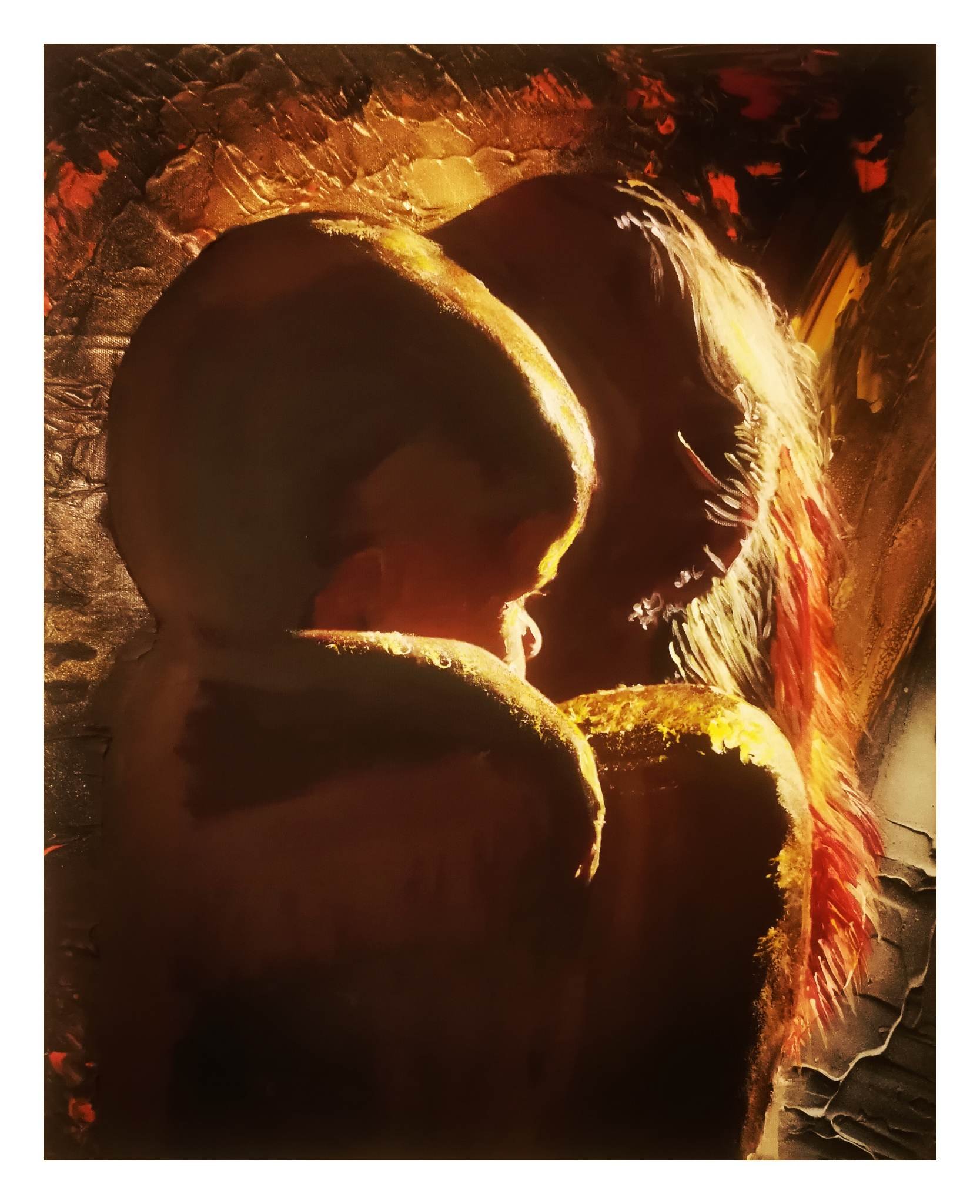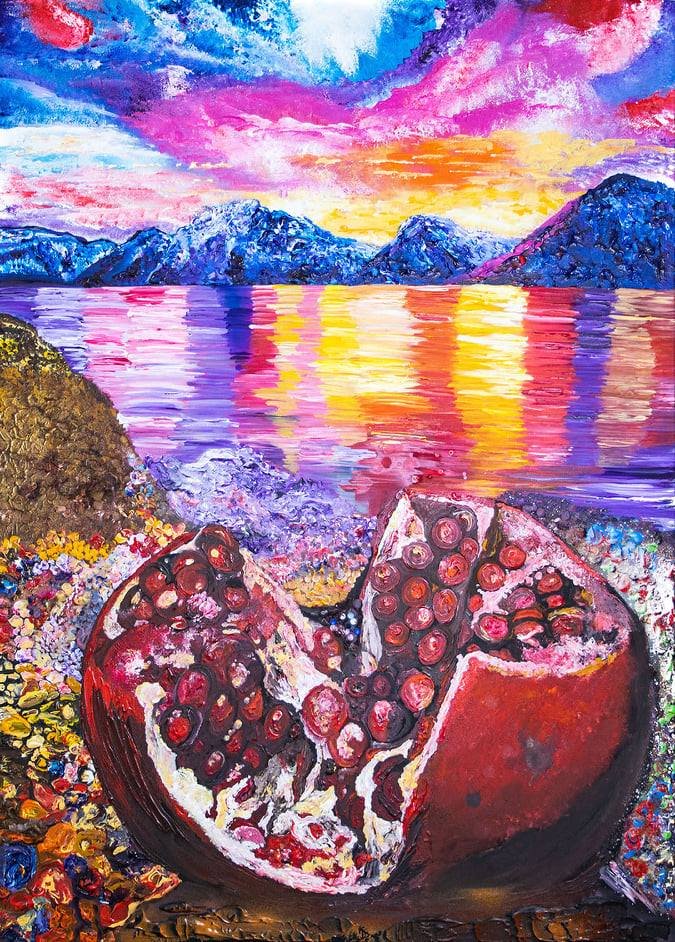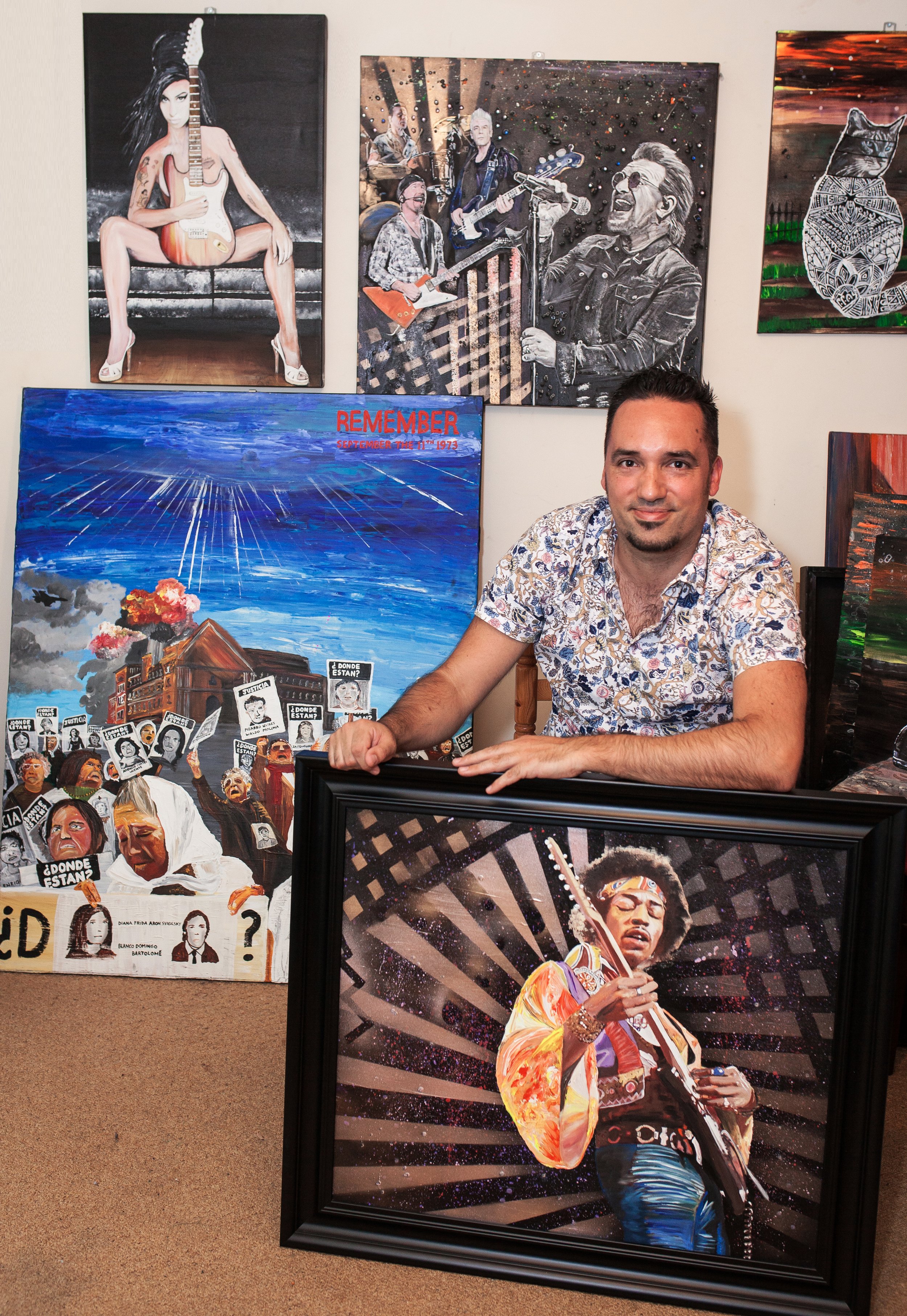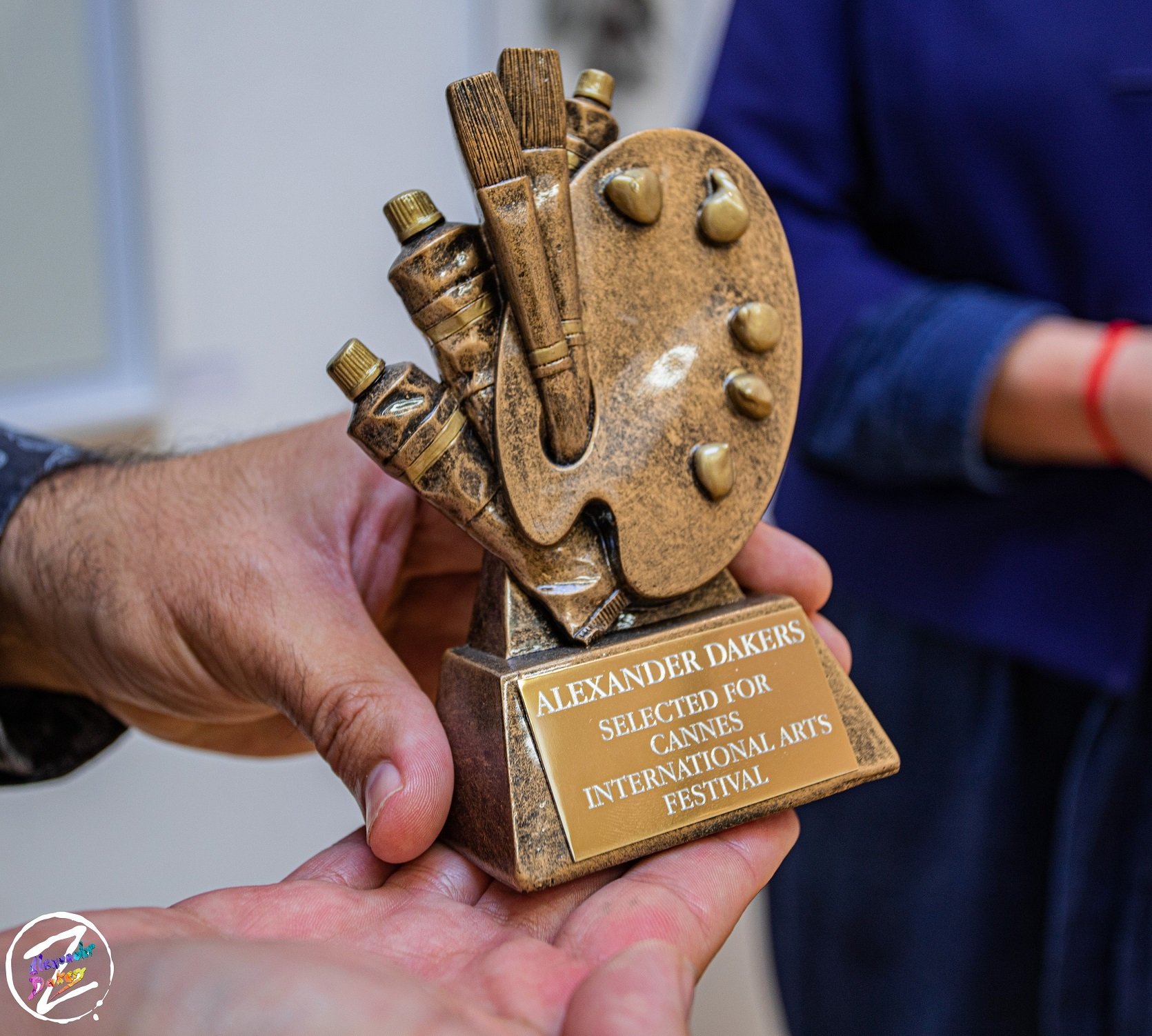Interview
Alexander Dakers
Alexander was born in the beautiful village of Innellan in Argyll and Bute, Scotland. At the age of 18, he moved to Glasgow to study art at Rennie Macintosh College, and later studied graphic design at Cardonald College School of Art.
Alexander won his first art competition at the age of 15 at the opening of a Wildlife Center in Glasgow. His watercolor painting of a lion won him a camera. His mother has kept the newspaper cutting to this day.
Since then, he’s won many art competitions, and is a name to start watching in the arts.
Alexander has sold a lot of his work during his travels from Glasgow to the Cotswolds, London, all the way to Dorset. Some of his work has found a permanent home in the Human Rights Museum in London Amnesty International head office and in Chile. A portion of the profits from his work have helped to support children in Africa. Alexander sponsored a child called Joe for eight years, who sadly past away on Tuesday March 19th, 2012. Before passing, Joe created a piece of art depicting him as an angel. Alexander still has this piece of art.
Alexander has also donated a portion of his income to Dorset Blind Association, who do the amazing work of helping blind people in Dorset.
Alexander currently lives and works in Bournemouth, and can always be found sketching anything that catches his eye.
What is your background and how did you start your journey?
“I was never good at anything else, but I loved art and colors, and I had a passion for creativity. My father, Alexander Stuart Dakers was a good artist, and his talent has been passed on to me. He taught me many techniques which I still use today. My father’s skills and my mother’s love and support nurtured my interest in painting. Chris Connelly, my art teacher also had a big influence on my career. He spent a lot of time with me, encouraging me to think positively and believe in myself. My father and my art teacher were the biggest influences that helped me enter the art world.
My father passed away recently. I’m planning an exhibition in London 2023 called Father and Sons, as I have two brothers. It’ll showcase his work alongside mine, and depict a clash of two artists. You can learn more about this exhibition here.
I first put my stamp on the art world through my first exhibition as I did it for the Mothers of the Disappeared. It was an exhibition of all my world mixed in with artwork about the event in Chile in 1973, in which many lost their lives.”
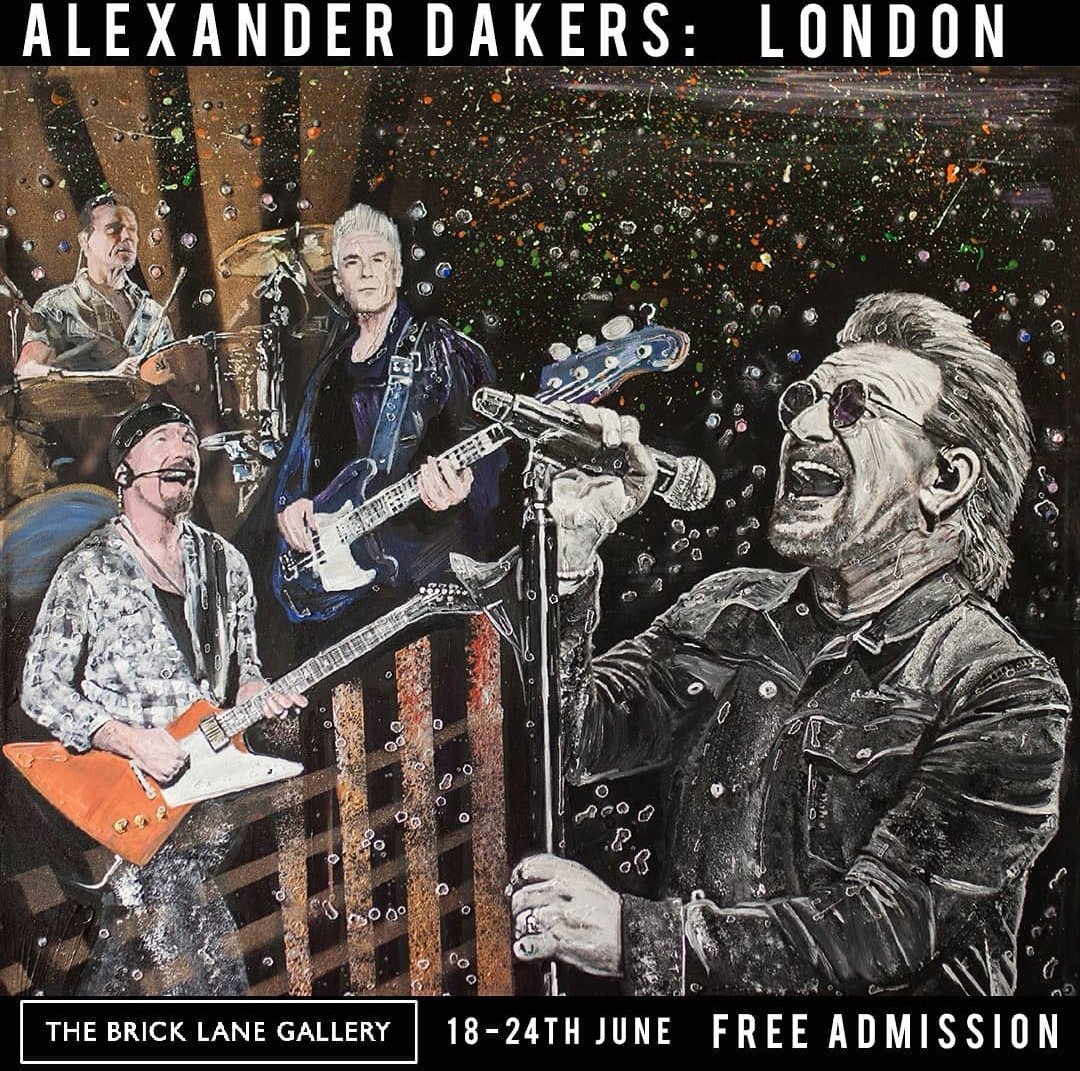
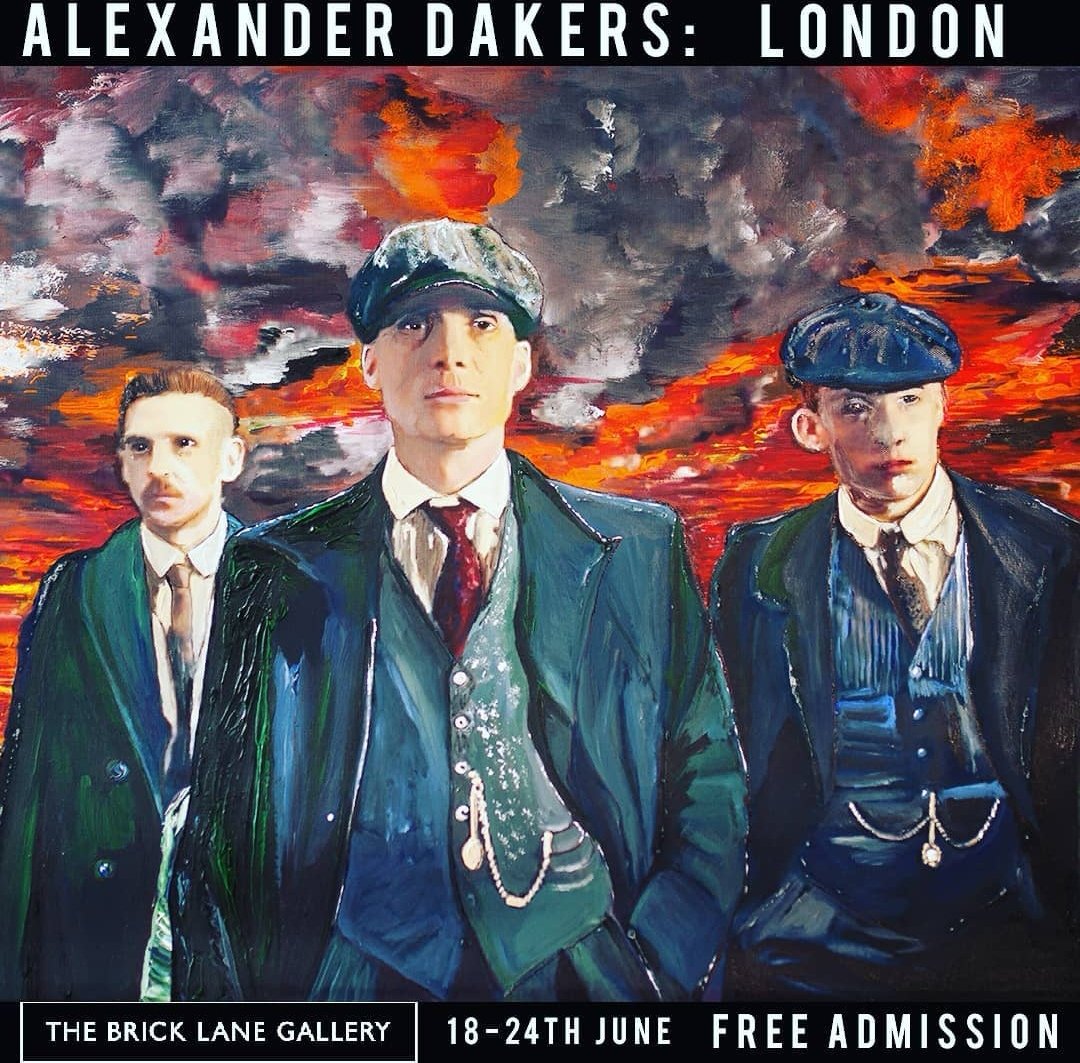
What inspires you most?
“People inspire me, as do nature, colors, and buildings.
Great artists from the past, like my favorite, Salvador Dali are also a great inspiration. Salvador was the most daring artist, and his use of colors amazes me.
I also get inspired by the idea of re-arranging views. I get excited when I see a blank canvas and I immediately want to throw my paints onto it. Then it all comes together: colors, texture, and techniques, and this inspires me to try new things. I’m the artist who’ll mix oils with acrylic because I believe it can be done.
I’ve done mural painting art work, and I once designed the walls of a school in Spain with nursery rhymes and cartoons. I recently did a mural painting for a restaurant called Big Mama.”
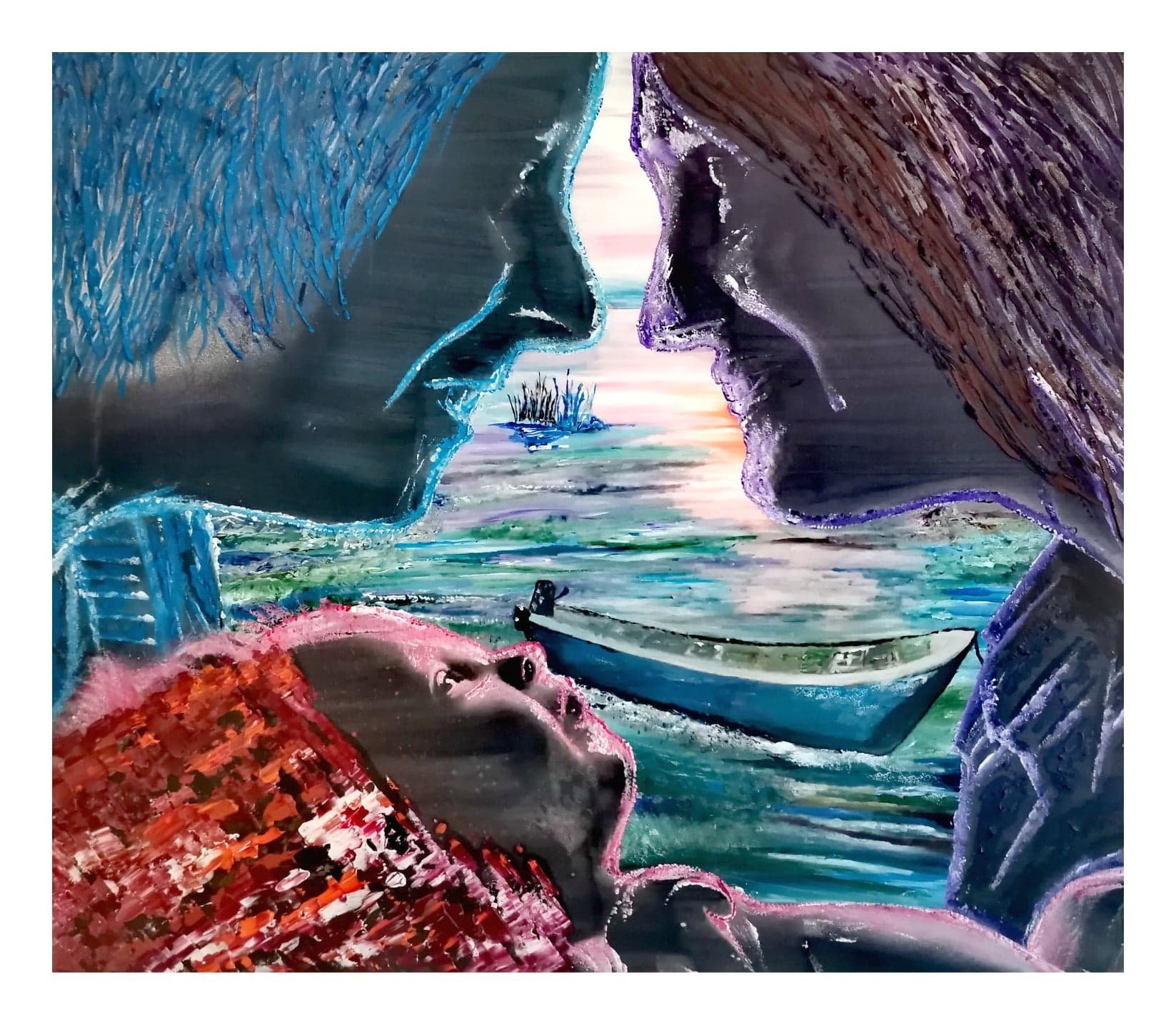
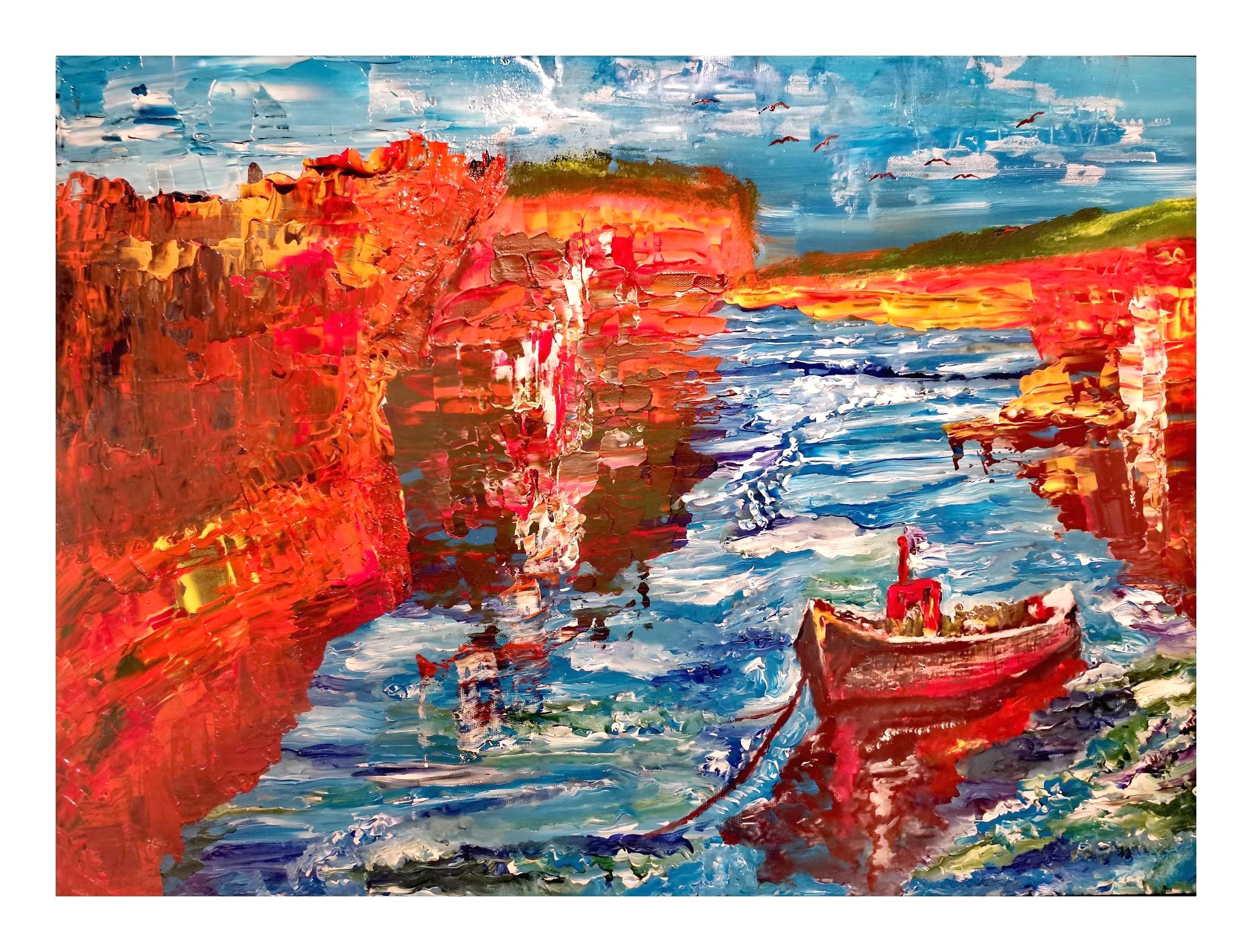
What themes do you pursue? Is there an underlying message in your work?
“My themes change a lot, as I’m diverse in my work and switch techniques, depending on the topic. Behind all my artwork is the message of human rights. I think it’s important to enjoy artwork and be open-minded in everything.
I enjoy surprising people with the diverseness of artwork and diversity. I enjoy using oils and I’m very daring with my work. My father loved the sea, and it’s not surprising that I love painting the ocean. I think it’s important to pay more attention and respect to nature.”
How would you describe your work?
“All my work is an experiment; an exercise in risk-taking. I simply don’t know what to expect with each piece. Through my work, there’s a connection with all artists. My art covers many subjects: portraits, pets, buildings, life drawing, landscape, murals, and fantasy/abstract work. I work with a variety of media such as graphite pencil, charcoal, pastel, watercolors, pen and ink, acrylic and oil paint. I would describe my art as diverse and colorful.
I enjoy using thick oils, and I’m very daring with my work. People are amazed when they see how fast I work, and seeing my creation come alive in front of them brings a feeling of perfection.”
“We consider ourselves to be the most important being in the world, and forget all the other life forms that inhabit it.
My artworks try to shift the focus from human to nature, especially seas, landscapes, oceans, and natural entities.”
Which artists influence you most?
“Salvador Dali is my greatest influence. I love his colors, his ideas, and his creativity. I’m very fond of his work, and can remember when I first saw it in Madrid.
I also have enormous respect for many older artists like Picasso and Van Gogh, who will always be remembered as the best. They mixed natural items to create colors. These great names in the art world have provided us future artists with a lot to learn.”
What is your creative process like?
“My creative process is always changing, reflective of the changes in everyday life and experiences. It is a conversation I have with myself when I feel I have something in particular to say, do, or achieve.
I’d describe this process as an evolution of an idea into its final form through a progression of thoughts and actions. Most of my ideas come to me right before I sleep, just as I’m waking up, when contemplating over a cup of coffee, or when music is playing. The creation begins in my mind and then evolves onto sketches on paper. If it sticks with me, I experiment in my studio, where it materializes naturally. I save all thoughts and ideas, and if they don’t work out, I try again in another way.
As I’m creating, I always ask my partner Barbara to give her own opinion before I release it to the world. Some of the pieces she didn’t like I was still able to sell. That’s the beauty of art: there’s a flavor for everyone. I still haven’t found my style, but as I’m always learning new techniques, that will come in later years.”
What is an artist’s role in society and how do you see that evolving?
“An artist plays one of the most important roles in society: to encourage, motivate, teach, and inspire the world. Artists are the people that shine light upon the unknown. The role of an artist is to make society aware of those elements that have not yet entered their consciousness.
Art reflects the lies and truths of its time. Relationships, emotions, politics, every part that our life touches is expressed through art in various forms. Artists have the power to reform the collective perception of society. They connect with a deep and uninterrupted bearing with their audience, i.e. society. Their work, be it a painting, poetry, song, act, or any other form of art, compels its viewer to justify or challenge their ideology or mindset.
I hope that in many years to come, my art will be remembered and passed on to the future. I believe most artists want the same thing.”
Have you had any noteworthy exhibitions you'd like to share?
“I’ll be exhibiting a solo show of my new work in 2023 called Father and Sons, mentioned above.
I will be at the Japan Tokyo Tower Art Fair and share link from 10th to 12th March 2023, mixing with top international artists around the world.
My other exhibitions have been as follows:
2022 - Cannes International Arts festival. I was selected as top 100 artists to watch. It was a proud moment for me. My painting Predator Instinct was there. You can read about it here.
2019 & 2021 - Solo exhibitions at the Bricklane gallery London where Damien Hirst had his own exhibitions. This meant a lot to me.
2019 - I exhibited in Chile Calle Centenario, 9250000 Santiago in 2019 and that was a powerful experience, with my work going to a human rights museum.
My first exhibition was at the Norfolk Royale Hotel, Bournemouth in 2013, and I was extremely proud to bring my work to the hotel where I worked. I dedicated it to Amnesty International for the important role human rights has played in my family.
My grandfather, Leopoldo Osorio was imprisoned in Chile – sentenced for 30 years – but with the help of Amnesty International he was freed after just three years. I look at it as something like a Nelson Mandela scenario. What he went through was unimaginable, so I wanted show this hurt through my art and connect people. Leopoldo worked with Chilean president Salvador Allende, who was overthrown by a military coup on September 11, 1973, led by Augusto Pinochet. According to a government report, at least 3,000 people were killed, while around 29,000 were tortured under the Pinochet regime. Many mothers lost there loved ones and some children where never found. We raised 8,000 pounds for Amnesty through my art work and have received awards for what I did for Amnesty International. You can learn more about it here.
My dream is to exhibit in America one day.”


